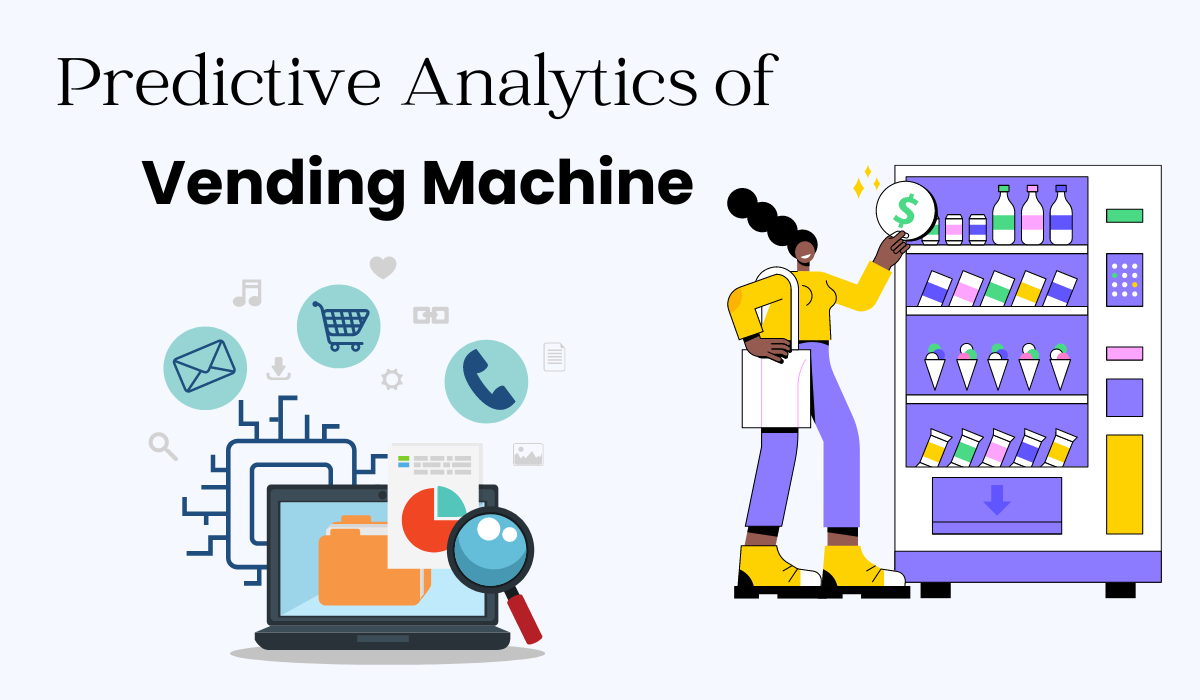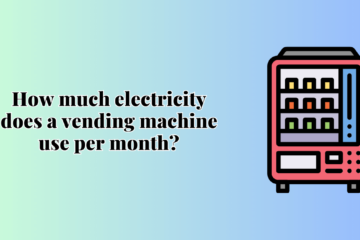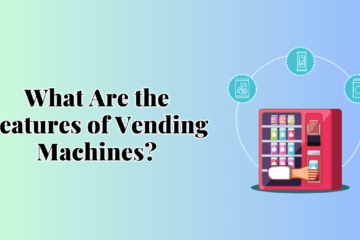The vending machine industry has evolved dramatically over the years, transitioning from basic mechanical devices to advanced, data-driven systems. Predictive analytics, a powerful tool in the realm of big data, is playing a crucial role in revolutionizing vending machine operations. This blog explores the impact of predictive analytics on various aspects of vending machine management, from inventory optimization to personalized customer experiences.
Understanding Predictive Analytics
Simple Explanation of Predictive Analytics
Predictive analytics involves using historical data, machine learning algorithms, and statistical techniques to forecast future outcomes. By analyzing patterns and trends, businesses can make informed decisions and anticipate future events.
How Predictive Analytics Works
Predictive analytics works by collecting and analyzing large datasets to identify patterns. These patterns are then used to build models that predict future behavior or events. The accuracy of these predictions depends on the quality and quantity of data available.
Importance of Data in Predictive Analytics
Data is the backbone of predictive analytics. The more accurate and comprehensive the data, the more reliable the predictions. For vending machine operators, data on sales, inventory levels, customer preferences, and machine performance is essential for effective predictive analytics.
Optimizing Inventory Management
How Predictive Analytics Helps in Managing Stock Levels
Predictive analytics enables vending machine operators to manage stock levels more efficiently by forecasting demand. This helps ensure that popular products are always in stock, while minimizing overstock of less popular items.
Benefits of Reducing Stockouts and Overstock Situations
Reducing stockouts improves customer satisfaction, as consumers are more likely to find their desired products available. Conversely, minimizing overstock reduces waste and storage costs, enhancing operational efficiency.
Examples of Improved Inventory Management
Several vending machine operators have successfully implemented predictive analytics to optimize inventory. For instance, machines in busy locations can be stocked with popular items during peak hours, while less frequented machines receive stock adjustments based on usage patterns.
Enhancing Maintenance and Reducing Downtime
Predictive Maintenance for Vending Machines
Predictive maintenance uses data to anticipate and prevent machine failures. By analyzing performance data, operators can identify potential issues before they lead to breakdowns, scheduling maintenance proactively.
Benefits of Anticipating and Preventing Machine Failures
Anticipating machine failures reduces downtime, ensuring that vending machines remain operational and profitable. It also lowers maintenance costs by addressing issues before they escalate into more significant problems.
Case Studies of Reduced Downtime and Maintenance Costs
Companies that have adopted predictive maintenance report significant reductions in downtime and maintenance expenses. For example, a major vending machine operator implemented predictive analytics to monitor machine performance, resulting in a 30% decrease in unexpected failures.
Personalizing Customer Experience
Using Data to Understand Customer Preferences
Predictive analytics can analyze customer data to identify preferences and purchasing patterns. This information allows operators to tailor product offerings to meet the specific needs of different customer segments.
Tailoring Product Offerings Based on Predictive Insights
By understanding what products are popular with different demographics, vending machines can stock items that are more likely to sell. This personalization enhances the customer experience and increases sales.
Real-Life Examples of Personalized Vending Experiences
Several vending machines now offer personalized recommendations based on past purchases. For example, a machine might suggest a favorite snack or drink to a returning customer, creating a more engaging and satisfying experience.
Boosting Sales and Revenue
Predicting Demand to Optimize Product Placement
Predictive analytics helps operators place high-demand products in the best locations, maximizing visibility and sales. It also aids in dynamic pricing, adjusting prices based on demand fluctuations.
Targeted Promotions and Dynamic Pricing
Operators can use predictive insights to launch targeted promotions and discounts, encouraging purchases. Dynamic pricing, which adjusts prices based on demand and inventory levels, can also boost revenue.
Examples of Increased Sales and Revenue Through Predictive Analytics
Many companies have seen substantial sales increases by leveraging predictive analytics. For instance, a vending machine operator used predictive models to identify peak sales times and adjust inventory accordingly, resulting in a 20% revenue increase.
Improving Route Planning and Logistics
Efficient Restocking Through Predictive Route Planning
Predictive analytics can optimize restocking routes, reducing travel time and fuel consumption. By forecasting when and where stock will be needed, operators can plan efficient routes that save resources.
Reducing Travel Time and Fuel Consumption
Efficient route planning not only saves time but also reduces the environmental impact of transportation. This is particularly important for large fleets of vending machines.
Benefits for Operational Efficiency and the Environment
Improved logistics enhance overall operational efficiency, leading to cost savings and a smaller carbon footprint. This makes the business more sustainable and profitable.
Enhancing Security and Fraud Detection
Identifying Patterns to Detect and Prevent Fraud
Predictive analytics can identify unusual patterns that may indicate fraudulent activity. By monitoring transactions and usage data, operators can detect and prevent fraud more effectively.
Ensuring the Security of Transactions and Customer Data
Ensuring the security of transactions and customer data is critical for maintaining trust. Predictive analytics helps identify vulnerabilities and implement measures to protect sensitive information.
Case Studies of Improved Security Measures
Several operators have successfully used predictive analytics to enhance security. For example, a vending machine company implemented analytics to monitor transaction patterns, resulting in a 15% reduction in fraudulent activities.
Sustainability Benefits
Reducing Waste Through Better Inventory Management
Predictive analytics helps reduce waste by ensuring that vending machines stock the right products in the right quantities. This minimizes expired or unsold items, contributing to sustainability.
Energy Savings from Efficient Operations
Efficient operations, driven by predictive analytics, lead to significant energy savings. For example, predictive maintenance ensures machines operate optimally, reducing energy consumption.
Examples of Sustainable Practices Enabled by Predictive Analytics
Sustainable practices include using energy-efficient components, optimizing routes to reduce emissions, and minimizing waste through better inventory management. These practices benefit both the environment and the business.
Challenges and Solutions
Common Challenges in Implementing Predictive Analytics
Implementing predictive analytics can be challenging due to data quality issues, the need for advanced technical skills, and the cost of technology.
Solutions to Overcome These Challenges
Solutions include investing in high-quality data collection, training staff in data analysis, and leveraging cloud-based analytics platforms to reduce costs.
Examples of Successful Implementation Strategies
Successful strategies involve phased implementation, starting with pilot projects to demonstrate value, and scaling up gradually. Collaboration with analytics experts can also enhance implementation success.
The Future of Predictive Analytics in Vending Machines
Emerging Trends and Technologies
Emerging trends include the use of AI to enhance predictive models, integration with IoT devices for real-time data, and more sophisticated data visualization tools.
Potential Future Applications and Innovations
Future applications may include fully autonomous vending machines that self-manage inventory and maintenance, as well as advanced personalization features that provide highly tailored customer experiences.
Predictions for the Next Decade
In the next decade, predictive analytics will become more integrated into vending machine operations, driving further innovation and efficiency. The industry will likely see continued growth in AI-driven solutions and greater emphasis on sustainability.
Conclusion
Recap of the Key Points on the Role of Predictive Analytics
Predictive analytics plays a crucial role in optimizing inventory, enhancing maintenance, personalizing customer experiences, boosting sales, improving logistics, and ensuring security in vending machine operations.
The Transformative Impact on Vending Machine Operations
The integration of predictive analytics is transforming vending machine operations, making them more efficient, profitable, and sustainable.
Final Thoughts on the Importance of Embracing Predictive Analytics
Embracing predictive analytics is essential for the future success of the vending machine industry. By leveraging data-driven insights, operators can enhance performance, meet consumer demands, and contribute to a more sustainable future.
FAQs
1. What is predictive analytics and how does it work?
Predictive analytics uses historical data, machine learning algorithms, and statistical techniques to forecast future outcomes, helping businesses make informed decisions.
2. How can predictive analytics improve inventory management in vending machines?
Predictive analytics forecasts demand, optimizing stock levels to reduce stockouts and overstock, thus improving customer satisfaction and reducing waste.
3. What are the benefits of predictive maintenance for vending machines?
Predictive maintenance anticipates and prevents machine failures, reducing downtime, lowering maintenance costs, and ensuring continuous operation.
4. How does predictive analytics enhance customer experience in vending machines?
By analyzing customer data, predictive analytics tailors product offerings and recommendations, creating a personalized and engaging experience for users.
5. What are some challenges in implementing predictive analytics, and how can they be overcome?
Challenges include data quality, technical skills, and cost. Solutions involve investing in high-quality data collection, training staff, and using cloud-based analytics platforms.




